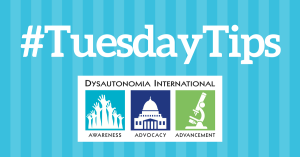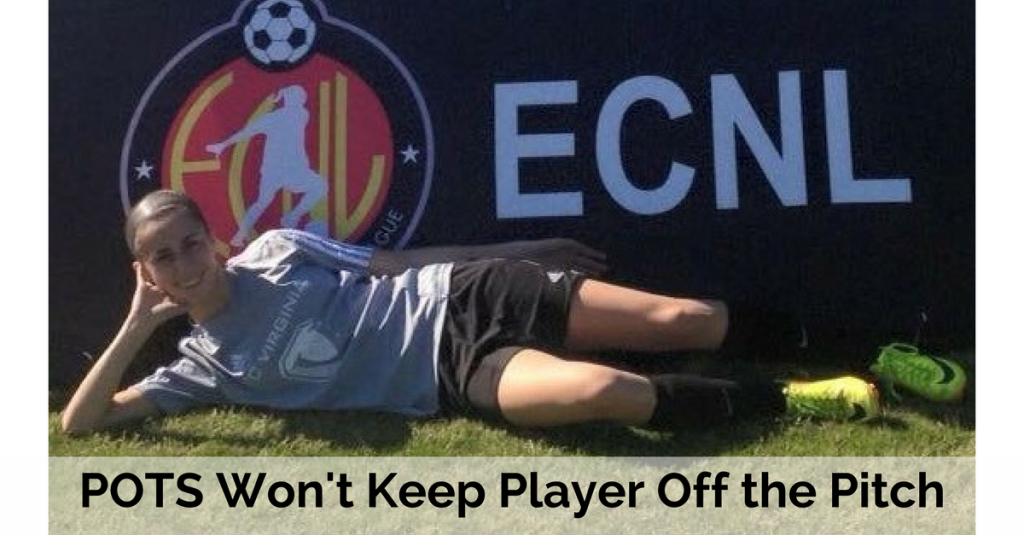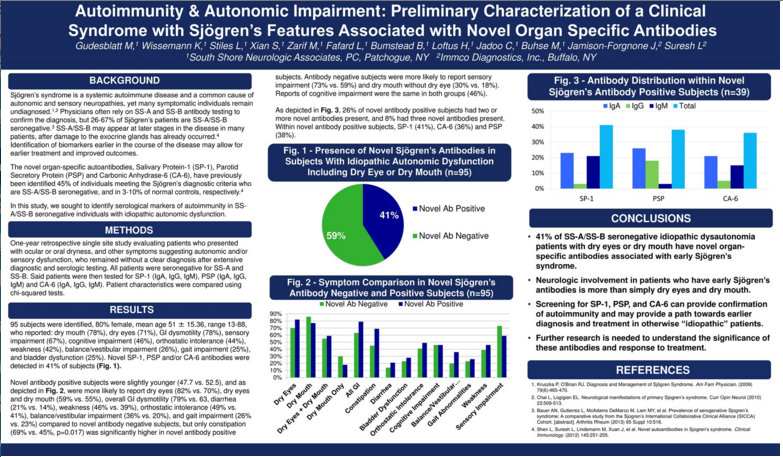Being newly diagnosed with a type of dysautonomia can be overwhelming. Besides having to learn about your diagnosis and the best ways to treat it, you may see a lot of confusing medical lingo being used by medical professionals and fellow patients in support groups.
This list is intended to help you take better control of your health care by providing you with the meanings of some of the most commonly used abbreviations and acronyms in your medical records, on doctor’s notes, prescriptions, test results, in medical books or articles, in forums, or in support groups.

A
AAG – Autoimmune autonomic ganglionopathy
AAI – Atlantoaxial instability
AAN – Autoimmune autonomic neuropathy
Abs/aabs – Antibodies or autoantibodies
ACE – Angiotension converting enzyme
ACh – Acetylcholine
AChE – Acetylcholinesterase
AChR – Acetylcholine receptor
ACTH – Adrenocorticotropic hormone
ADH – Antidiuretic hormone
ADHD – Attention deficit hyperactivity disorder
ADL – Activity of daily living
AE – Autoimmune encephalitis
AF – Atrial fibrillation
AI – Autoimmune
ANA – Antinuclear antibody
ANS – Autonomic nervous system
APS – Antiphospholipid syndrome
B
BB – Beta blocker
BID/bid – Taking a medication twice a day
BM – Bowel movement
BP – Blood pressure
BPM – Beats per minute
Bx – Biopsy
C
C3 – Complement component 3
C4 – Complement component 4
CCI – Craniocervical Instability
CFS – Chronic fatigue syndrome
CIDP – Chronic inflammatory demyelinating polyneuropathy
CMT – Charcot Marie Tooth disease
CNS – Central nervous system
COPD – Chronic obstructive pulmonary disease
CPAP – Continuous positive airway pressure
CRP – C-reactive protein
CRPS – Complex regional pain syndrome
CSF – Cerebrospinal fluid
CVID – Common variable immune deficiency
CVS – Cyclic vomiting syndrome
D
D5W – Dextrose 5% in water
DBHD – Dopamine beta hydroxylase deficiency
DBP – Diastolic blood pressure
Dx – Diagnosis
DVT – Deep venous thrombosis
dsDNA – Double stranded DNA autoantibodies
E
Echo – Echocardiogram
EDS – Ehlers-Danlos Syndrome
EEG – Electroencephalogram
EKG/ECG – Electrocardiogram
EMG – Electromyogram
EP – Electrophysiologist
F
FD – Familial dysautonomia
FMS – Fibromyalgia
G
g-AChR autoantibody – Ganglionic acetylcholine receptor autoantibody
GBS – Guillain Barre syndrome
GI – Gastrointestinal
GP – Gastroparesis, or general practitioner (depending on context)
H
HR – Heart rate
Hup A – Huperzine A
HA – Headache
HTN – Hypertension
HUT/HUTT – Head up tilt (aka TTT)
Hx – History
I
IBD – Inflammatory bowel disease
IBS – Irritable bowel syndrome
ICD – Implantable cardioverter defibrillator
IM – Intramuscular
IST – Inappropriate sinus tachycardia
IV – Intravenous
IVIG – Intravenous immunoglobulin
J
JHS – Joint hypermobility syndrome
L
LDN – Low dose naltrexone
LEMS – Lambert-Eaton myasthenic syndrome
LLMD – Lyme literate medical doctor
LR – Lactated ringers
M
MALS – Median arcuate ligament syndrome
MCTD – Mixed connective tissue disease
ME – Myalgic encephalomyelitis (aka CFS)
MG – Myasthenia gravis
MS – Multiple sclerosis
MSA – Multiple system atrophy
MTHFR – Methylene tetrahydrofolate reductase
MVP – Mitral valve prolapse
N
NCS – Neurocardiogenic syncope or nerve conduction study (depending on context)
NE – Norepinephrine/noradrenaline
NET – Norepinephrine transporter
NG – Naso-gastric tube
NJ – Naso-jejunal tube
NMH – Neurally mediated hypotension
nOH – Neurogenic orthostatic hypotension
NS – Neurosurgeon or normal saline (depending on context)
NSAID – Non-steroidal anti-inflammatory drugs
O
OH – Orthostatic hypotension
OI – Orthostatic intolerance
P
PAF – Pure autonomic failure
PANS – Pediatric acute-onset neuropsychiatric syndrome
PANDAS – Pediatric autoimmune neuropsychiatric disorder associated with streptococcal infections
PCP – Primary care physician
PFT – Pulmonary function tests
Po – By mouth
POTS – Postural orthostatic tachycardia syndrome
PP – Pulse pressure
PPI – Proton pump inhibitor
PRN/prn – Taking medication as needed
PT – Physical therapy
Pt – Patient
PTSD – Post traumatic stress disorder
Q
QD/qd – Once a day
QID/qid – Four times a day
QOL – Quality of life
QSART – Quantitative sudomotor axon reflex test
QST – Quantitative sensory testing
R
RA – Rheumatoid arthritis
RAS – Renin aldosterone system
RDS – Reflex sympathetic dystrophy (aka CRPS)
Rx – Prescription
S
SBP – Systolic blood pressure
SCIG – Subcutaneous immunoglobulin
SERT – Serotonin Transporter
SFN – Small fiber neuropathy
SIBO – Small intestinal bacterial overgrowth
Sl – Sublingual
SLE – Systemic lupus erythematosus
SOB – Short of breath
SubQ – Subcutaneous
SCIG – Subcutaneous immunoglobulin
SS – Sjogren’s syndrome
SS-A – Anti-Ro autoantibodies (Sjogren’s autoantibodies)
SS-B – Anti-La autoantibodies (Sjogren’s autoantibodies)
SSc – Systemic sclerosis
SSRI – selective serotonin reuptake inhibitor
SNRI – selective norepinephrine reuptake inhibitor
SVT – Supraventricular tachycardia
Sx – Symptoms
T
TID/tid – three times a day
TMJ – Tempomandibular joint
TPN – Total parenteral nutrition
TST – Thermoregulatory sweat test
TTT – Tilt table test
Tx – Treatment
U
UCTD – Undifferentiated connective tissue disease
UTI – Urinary tract infection
V
VNS – Vagus nerve stimulation
VVS – Vasovagal syncope
W
WPW – Wolf-Parkinson-White
Special thanks to Emily, Shane, Jonathan, Natasha, Irina, Lauren and everyone else who contributed to this list!




 by
by 





 by
by 
 Dysautonomia International asked patients to share what lifestyle adaptations they use to help manage their dysautonomia symptoms as part of our #TuesdayTips project. Look out for other #TuesdayTips posts on social media and your tips may be featured on our blog!
Dysautonomia International asked patients to share what lifestyle adaptations they use to help manage their dysautonomia symptoms as part of our #TuesdayTips project. Look out for other #TuesdayTips posts on social media and your tips may be featured on our blog!
























